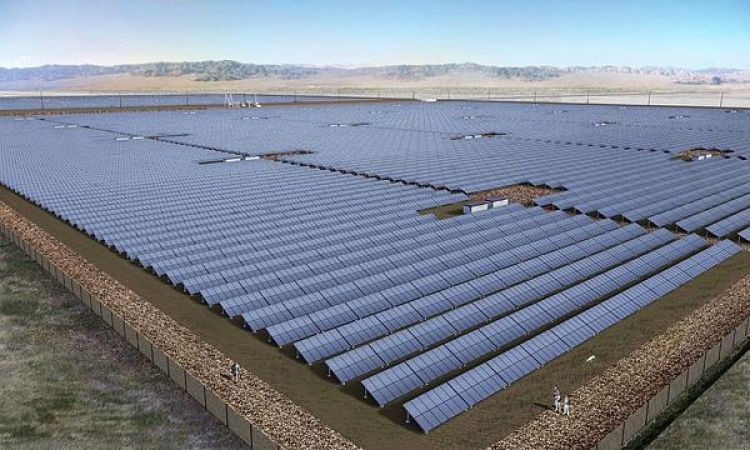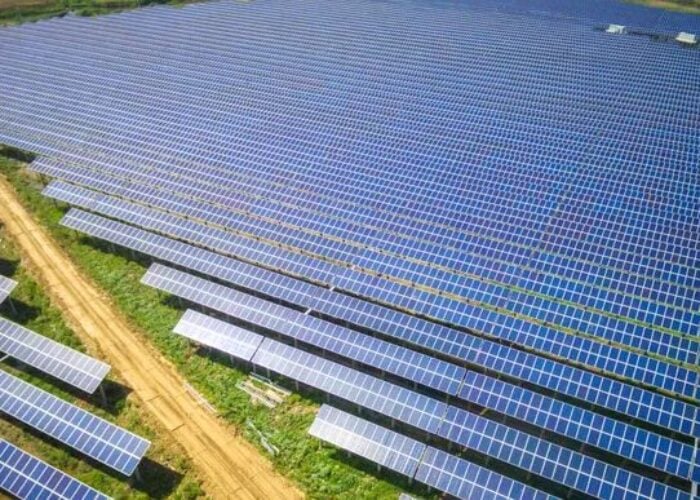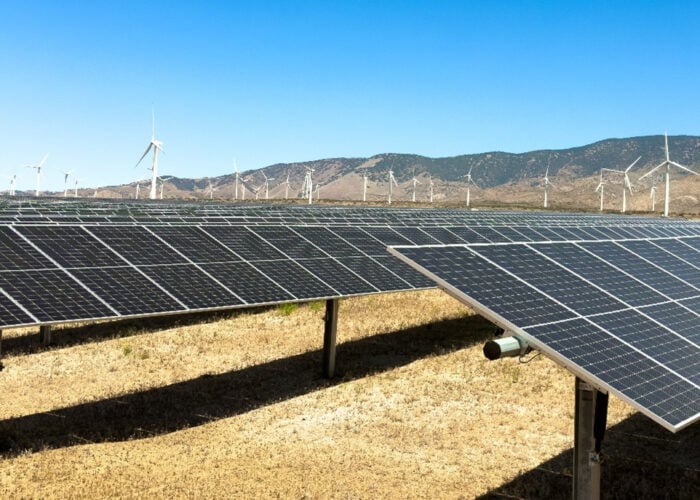
California Public Utilities Commission (CPUC) has approved a 11.5GW procurement of electricity capacity from greenhouse gas-free sources, while also approving a resolution that campaigners said will have severe negative impacts on the state’s residential solar and solar-plus-storage growth.
It was a busy day for the CPUC, with another item on its agenda being the introduction of new rules and reporting requirements for the public safety power shutoffs (PSPS) that major utilities have introduced to prevent their electricity infrastructure from causing or exacerbating the effects of wildfires.
Unlock unlimited access for 12 whole months of distinctive global analysis
Photovoltaics International is now included.
- Regular insight and analysis of the industry’s biggest developments
- In-depth interviews with the industry’s leading figures
- Unlimited digital access to the PV Tech Power journal catalogue
- Unlimited digital access to the Photovoltaics International journal catalogue
- Access to more than 1,000 technical papers
- Discounts on Solar Media’s portfolio of events, in-person and virtual
The regulator had put plans forward in May to address the state’s electricity sector ‘mid-term reliability,’ ensuring electricity supply and network reliability through to the end of 2026. This period includes the retirement of the 2.2GW Diablo Canyon nuclear facility as well as 3,700MW of natural gas power plant retirements, making the need for massive procurement both urgent and acute.
As sister publication Energy-Storage.news reported a few weeks ago, CPUC’s proposed plan to meet the shortfall would require 3,000MW of deployment by 2023, a further 4,500MW by 2024, another 2,000MW the following year and then 2,000MW by 2026. The plan also included a world-first large-scale procurement for 1,000MW of long-duration energy storage, as well as 1,000MW to come from geothermal.
The approval yesterday marks CPUC’s largest-ever single round of procurement, the regulator said, and the proposal stipulated that all capacity must come from zero emissions sources — an alternative proposal which included some provision for fossil fuel resources to be involved was withdrawn before the vote.
“Today’s decision to adopt a procurement plan that is greenhouse gas free, securing much-needed clean energy resources for the future, is a major step in the state’s path to carbon neutrality,” Patrick Sinclair, executive director of the California Alliance for Renewable Energy Solutions (CARES) said in a statement sent to Energy-Storage.news.
Sinclair said CARES applauded the decision to include the 1,000MW long-duration procurement in particular, adding that it could play a major role in helping the state meet peak demand and keep lights on when renewables like wind or solar were less available.
“We have a long road ahead to achieve the clean energy future the state has envisioned but we know it is possible with the right resources,” Sinclair said, urging California’s leadership to continue advancing long-duration storage projects in particular.
“Today’s historic decision is key to fulfilling our commitment to our clean energy and electric reliability goals. The procurement we ordered is equal to output of four large nuclear power plants or 20 natural gas plants,” CPUC commissioner Clifford Rechtschaffen said.
“Included is solar, wind, geothermal, and long duration storage—pumped hydro facilities or other emerging technologies that can store energy for eight hours or longer. Our actions today will ensure that we can keep the lights on during periods of greatest demand, even as we retire Diablo Canyon and other natural gas plants.”
CPUC president Marybel Batjer said California is on track to meet its long-term target for having 100% emissions-free electricity by 2045.
Rooftop solar showdown
There was a less warm welcome from the clean energy industry for another major decision CPUC took yesterday, as the regulator opted to approve a new valuation method for distributed solar and solar-plus-storage which could greatly limit new rooftop solar growth in favour of utility-scale, utility-owned solar PV.
Bernadette De Chiaro, executive director of the California Solar and Storage Association said on Twitter that commissioners voted unanimously vote to “slash the value of solar,” voting against consumer solar and coming down on the side of “large power plants favoured by Pacific Gas & Electric and other utilities”. The utility regulator had sided with utilities against consumers, she said.
“California needs more clean energy, not less,” Del Chiaro tweeted.
@californiapuc just voted UNANIMOUSLY to slash value of rooftop solar, against consumer solar and prioritizing large power plants favored by @PGE4Me and other utilities. California needs more clean energy not less. #savecaliforniasolar #utilityprofitgrab
— Bernadette Del Chiaro (@DelChiaroSolar) June 24, 2021
The crux of the argument is that the CPUC voted to approve modifications to the ‘Avoided Cost Calculator,’ a methodology tool developed by consulting firm E3 that measures how much the utility companies’ costs of operating their networks and delivering power go down with each new rooftop solar installation in the state.
The newest annual edition of the cost calculator cuts that avoided cost figure drastically, by about a third since the 2020 edition. One table shown at the online CPUC hearing showed a 58% drop in the value of rooftop solar-plus-storage and a 74% drop in the value of rooftop solar in the PG&E service area, although the value of heat pumps and electric vehicles went up 145% and 31% respectively.
Campaign group Save California Solar heavily criticised the new Avoided Cost Calculator modifications, noting that they make the assumption that between now and 2025, 30GW of new utility solar will be deployed, a figure Save California Solar said is deeply unrealistic, given that California to date has about half that capacity installed and between 2017 and 2021, only around 6.4GW of utility-scale solar has been installed. The calculator also makes unrealistic assumptions on future wholesale electricity price behaviour, the group said.
The vote to modify the methodology comes almost immediately after solar industry and climate advocacy groups won a major legal battle to save net metering as a means of incentivising and paying for residential solar. Assembly Bill (AB) 1139 was rejected at the beginning of June by the California Assembly. AB 1139 would have seen net metering rates cut significantly and removed requirements for the CPUC to ensure the sustainable growth of California rooftop solar.







